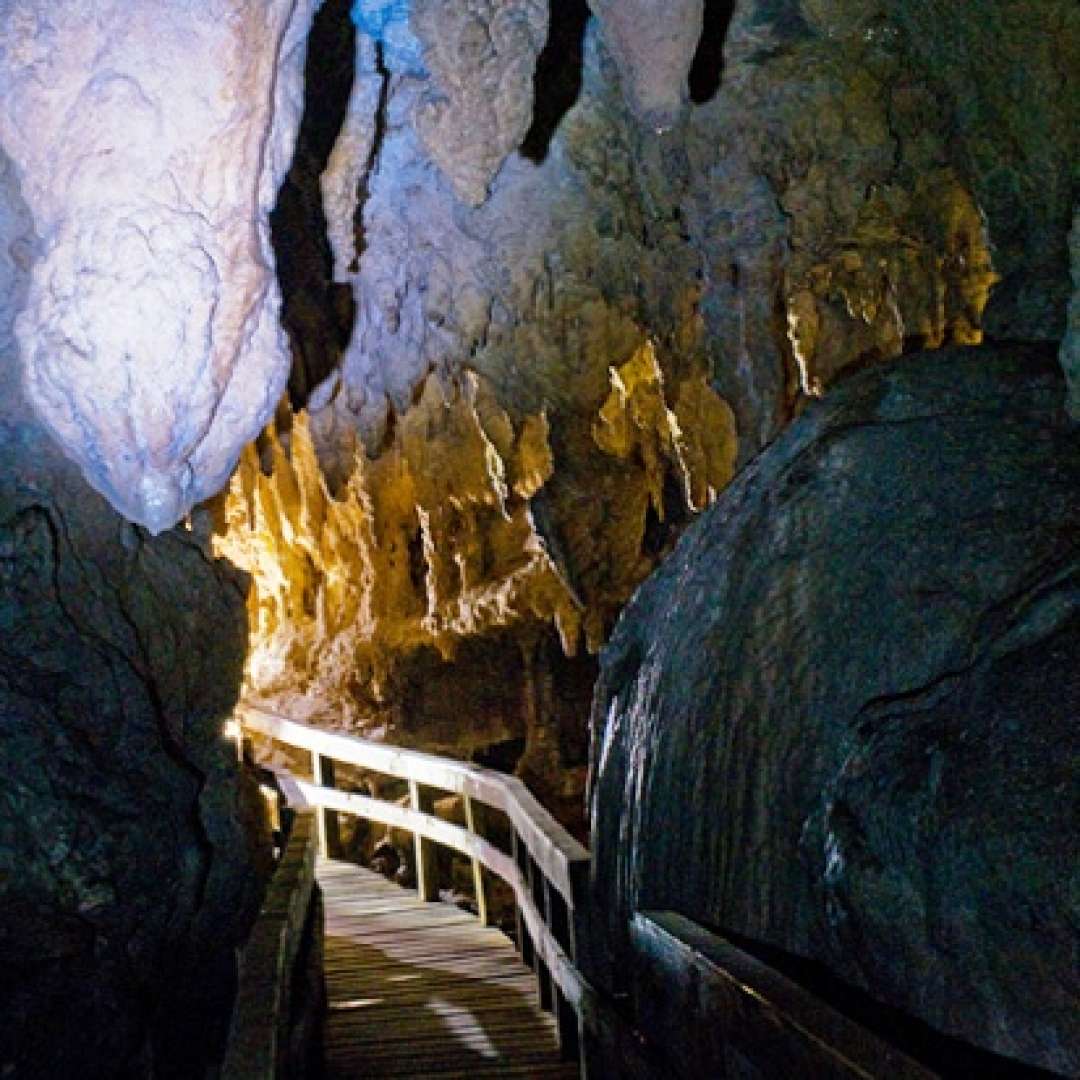Share this Article
Introduction
Deep in the lesser-explored landscapes of western Nepal lies one of nature’s most mesmerizing wonders — the glowworm caves, an enchanting underground world where bioluminescent organisms create a galaxy of living lights. Far removed from the crowded trekking trails and bustling cities, these caves shimmer with soft blue-green luminescence, transforming darkness into a surreal cosmic display.
While New Zealand’s Waitomo Caves are world-famous for their glowworms, few people know that Nepal, too, shelters its own version of this natural spectacle. Hidden within the folds of rugged hills and limestone cliffs of Dailekh, Surkhet, and parts of Bajhang and Achham, the glowworm caves of western Nepal are a secret realm that blends mystery, biology, and local folklore. These glowing sanctuaries are not only a scientific curiosity but also a powerful symbol of the natural beauty still waiting to be discovered in the remote corners of the Himalayas.
The Hidden Geography of Western Nepal
Western Nepal, stretching from the mid-hills of Surkhet to the high ridges of Bajura, is a region of vast contrasts. It is known for its dramatic gorges, untouched forests, ancient trade routes, and mystic caves. Among these caves, some remain unexplored, holding geological secrets millions of years old.
The glowworm caves, found primarily in limestone and karst formations, are formed by the slow dissolution of rock through underground water movement. Over centuries, this process creates caverns, tunnels, and stalactites that make ideal habitats for glowworms. The damp, dark, and cool environment provides the perfect setting for these luminescent creatures to thrive.
Local villagers often refer to these caves as “Jhyapke Gufa” or “Jhyapne Gufa”, meaning “the twinkling caves.” For them, the lights are not just insects — they are considered the eyes of ancestral spirits watching over the land.
What Are Glowworms?
Glowworms are bioluminescent larvae belonging to various species of flies, beetles, or fungi gnats. In Nepal, the glowworms found in these caves are believed to be related to fungus gnat species similar to those in Southeast Asia. Their glow is the result of a biochemical reaction between the enzyme luciferase, a pigment called luciferin, and oxygen.
This light is used primarily for attracting prey and mates. Hanging from the cave ceiling, the larvae create thin, sticky silk threads that glisten in the light they produce. When small insects are drawn toward the glow and become trapped, the glowworms feed on them. In the pitch-black caves of western Nepal, this natural process transforms the environment into an ethereal light show.
The Science Behind the Glow
The light produced by glowworms is known as cold light, meaning it generates no heat. It is one of the most energy-efficient forms of light in nature, with almost all energy converted into visible illumination. Scientists studying these caves have noted that the glow varies in color intensity and duration depending on humidity, temperature, and the life stage of the larvae.
Interestingly, the glowworms’ bioluminescence also serves as a defense mechanism, deterring predators and signaling toxicity. In the caves of Nepal, this has led to the evolution of unique patterns — with some glowworms emitting steady light while others pulse rhythmically, creating a living symphony of illumination across the cave walls.
Myths and Folklore Surrounding the Glowworm Caves
In the rural hills of western Nepal, science and spirituality coexist harmoniously. Local legends surrounding the glowworm caves often describe them as gateways to the spirit world or sacred abodes of deities. Some tales speak of lost travelers guided to safety by the mysterious lights, believed to be ancestral souls showing the way.
In Dailekh, elders tell stories of a goddess who wept for the souls of those who died in the mountains. Her tears, they say, turned into glowing creatures that took shelter inside the caves. In Bajhang, another tale recounts how a wandering ascetic meditated in one such cave and witnessed the glowworms as manifestations of divine energy.
These myths have helped preserve the caves as sacred sites, often preventing exploitation and ensuring their survival. Villagers visiting them do so with reverence, offering flowers, butter lamps, and grains to honor the spirits that dwell within.
The Discovery and Exploration
Although glowworms have long been known to locals, scientific documentation in Nepal is relatively recent. In the early 2000s, local explorers and geologists began identifying caves with glowing organisms in parts of Surkhet and Dailekh. Subsequent visits by naturalists revealed that these glows were indeed from bioluminescent insects rather than mineral reactions or fungi.
However, due to limited accessibility, harsh terrain, and lack of research funding, only a handful of these caves have been properly studied. In recent years, young Nepali explorers, photographers, and speleologists have begun documenting these hidden wonders, bringing attention to the need for conservation and eco-tourism initiatives.
One particularly famous site lies near Naumule in Dailekh District, where visitors report seeing thousands of tiny blue-green lights scattered across cave ceilings like stars in the night sky. This cave, reachable only after several hours of trekking, remains one of Nepal’s most visually spectacular natural attractions — though still largely unknown beyond local circles.
Biodiversity and Ecological Importance
Glowworms are not solitary inhabitants of these caves. Their ecosystems are complex microcosms where fungi, bats, crickets, spiders, and tiny crustaceans coexist. The presence of glowworms indicates a healthy, undisturbed cave ecosystem, as they depend on stable humidity, clean air, and a delicate food chain.
Any disturbance — such as smoke, loud sounds, or artificial lighting — can disrupt their behavior and reproduction. Therefore, scientists emphasize that preserving these caves requires careful management, especially if eco-tourism expands in the region. The caves are also valuable for studying bioluminescence, microhabitat evolution, and climate change impacts on fragile species.
The Journey Into the Glow
Visiting a glowworm cave in western Nepal is an experience unlike any other. The journey often begins with treks through remote forests, steep hills, and small villages where traditional life continues untouched by modernity. Guides, usually local youths familiar with the terrain, lead visitors through narrow paths and streams that eventually open into cave mouths framed by moss and limestone.
Once inside, darkness envelops everything. The air is cool and moist, echoing with distant drips of water. As eyes adjust, faint glimmers begin to appear overhead — a few at first, then hundreds, then thousands. The ceiling transforms into a shimmering sky, with glowing threads hanging down like strands of starlight.
Standing in silence under this living galaxy, one feels both the vastness and intimacy of nature. It is a humbling reminder that even in the quiet corners of the earth, life continues to create beauty beyond human imagination.
Local Involvement and Community Tourism
The communities living near these caves have started recognizing their potential for sustainable tourism. Villagers have begun guiding visitors, offering homestays, and promoting cultural experiences alongside natural exploration. For many, this new attention brings much-needed income to regions long neglected by mainstream tourism.
However, local leaders emphasize responsible visitation — ensuring that the natural habitat remains untouched. Visitors are advised to avoid using bright lights, touching the walls, or making loud noises that can harm the glowworms. In some areas, entrance fees go directly to conservation funds and local schools, creating a model for eco-friendly rural development.
Challenges and Threats
Despite their beauty, the glowworm caves face multiple challenges. The lack of formal protection leaves them vulnerable to human interference, deforestation, and pollution. The fragile limestone structures can also be damaged by unregulated tourism.
Another concern is climate change, which affects temperature and moisture levels inside caves. Even small changes can disrupt glowworm populations, as they are highly sensitive to environmental shifts. Without systematic research and conservation efforts, Nepal risks losing these rare bioluminescent ecosystems before fully understanding them.
Local governments, conservation NGOs, and universities could play crucial roles in documenting and safeguarding these caves. Partnerships with scientific institutions might also help identify species unique to Nepal, expanding knowledge about Himalayan biodiversity.
Spiritual and Cultural Dimensions
Beyond their ecological value, the glowworm caves continue to hold deep spiritual meaning for local communities. They are places where the physical and the mystical intersect — where darkness gives birth to light. The shimmering glow is often interpreted as a metaphor for hope and transformation — the emergence of brightness even in isolation.
Some local shamans, or Jhankris, use these caves for meditation, believing that the glow represents the presence of protective deities. Ritual offerings, chants, and prayers are performed to seek blessings for good harvests, protection from illness, and peace in the community. Thus, the caves function as living temples of nature, merging science, art, and faith.
Comparative Significance: Nepal and the World
Globally, glowworm caves are considered rare ecological phenomena. Apart from New Zealand, similar caves exist in Australia, Malaysia, and Japan. Nepal’s glowworm caves, though lesser-known, have the potential to join this elite list, offering unique insights into Himalayan biodiversity.
Their discovery adds a new dimension to Nepal’s natural heritage — one beyond mountains and trekking. For international travelers, this represents an exciting new form of eco-tourism that combines adventure, biology, and cultural immersion. With careful management, these caves could place western Nepal on the global map of sustainable exploration.
Preserving the Light
To ensure that the glowworm caves continue to inspire future generations, preservation is essential. Community-led conservation, scientific research, and government recognition can help protect these natural wonders. Educational programs can raise awareness among locals and visitors about the ecological sensitivity of bioluminescent habitats.
Establishing protected cave zones, restricting human access during breeding seasons, and promoting low-impact tourism are vital steps. When handled with respect and scientific care, these caves can become shining examples of how rural Nepal can balance tradition, nature, and modern eco-development.
Conclusion
The glowworm caves of western Nepal are a testament to nature’s boundless creativity and the hidden marvels of the Himalayas. Beneath the rugged hills and forested valleys, a silent universe glows — delicate, mysterious, and profoundly beautiful. These caves remind us that even in the darkest places, life finds a way to illuminate its surroundings.
For Nepal, they represent more than a natural wonder; they are a symbol of untouched potential, of harmony between humans and the environment, and of light emerging from shadow — much like the story of the nation itself.
As interest in eco-tourism grows, the glowworm caves offer a new path — one that respects nature, uplifts communities, and celebrates the unseen beauty that has always existed in the heart of Nepal.
Categories:
Culture & Traditions
Tags:
GlowwormCavesNepal
,
WesternNepalCaves
,
NaturalWondersNepal
,
NepalTravelSecrets







